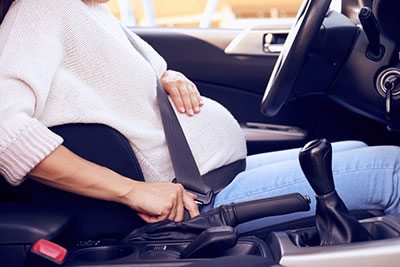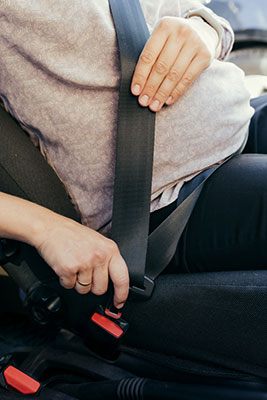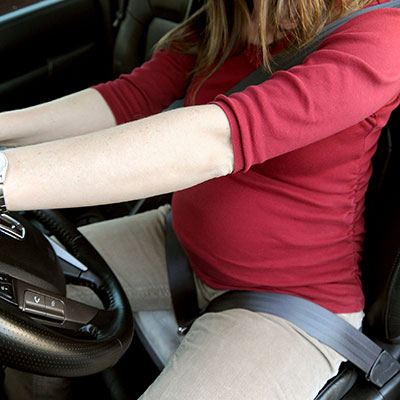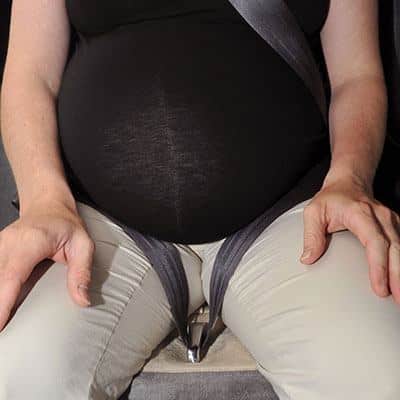Being pregnant doesn't mean you have to sacrifice safety. However, to ensure your well-being and that of your precious cargo, it's important to make sure that you're practicing safe driving habits while expecting. The best way to do so is by investing in a pregnancy seat belt positioner that allows expectant moms to protect themselves on the road better.
We've created this comprehensive guide for all future mommies looking for maximum safety standards on the road. So read on and discover how these products will keep you comfy, safer, and stress-free while on those bumpy roads.
More...
Take Away Key Points:
Table of Contents
- Pregnant women and pregnancy seat belt positioners
- Tummy Shield tested for safety in future mommies
- 1. What is a Tummy Shield?
- 2. How does a Tummy Shield differ from regular seat belts?
- 3. Is Tummy Shield crash-tested?
- 4. What is the design of the Tummy Shield?
- 5. What does the Tummy Shield do?
- 6. Who can use the Tummy Shield?
- 7. What's the main result of Tummy Shield's crash test?
- 8. When should you use the Tummy Shield?
- FAQs
- Final Thoughts
Pregnant women and pregnancy seat belt positioners
Crashes are the leading cause of traumatic fetal injury mortality in the USA. The research conducted by the University of Michigan shows more than 100,000 lost pregnancies due to car crashes.
For a pregnant driver, there is nothing more important than the safety of her unborn baby. However, what if the existing seat belt system is insufficient to prevent pregnancy complications and life-threatening situations resulting in lost pregnancies of pregnant occupants?
In that case, the pregnant drivers should refer to the seat belt adjusters to enforce the current seat belt system and protect the unborn baby. So, let's see what the benefits of seat belt adjusters are.
1. What is a seat belt pregnancy adjuster?

A seat belt adjuster is a device designed to provide pregnant drivers and passengers with increased safety and comfort while driving. It works by placing the device on the car seat, wrapping the attached belt around it, and securing it with the buckle.
This allows the lap belt to be positioned across the thighs instead of over the belly, providing a more comfortable fit for pregnant women. Additionally, some pregnancy seat belt positioners are crash-tested for added safety.
2. How does a seat belt adjuster work?
A seat belt positioner helps to prevent car accidents and loss of babies for pregnant women by adjusting the seat belt to fit the woman's body. The positioner is designed to keep the lap portion of the seat belt low and snug across the hips while keeping the shoulder portion of the belt in place across her chest. This ensures that if an accident occurs, both mother and baby would be protected from any potential harm.
Additionally, some seat belt positioners come with a Tummy Shield specifically designed for pregnant women. This shield acts as a cushion between the seatbelt and abdomen, providing extra protection for both mother and baby in case of a car accident.
3. How should you use the seat belt position?
If you are pregnant and driving, it is important to wear a seat belt properly. First, use a pregnancy seat belt positioner to lift your belly and position the lap belt snugly across the tops of your thighs and hip bones.
Never place the lap belt over or on top of your belly. Additionally, the shoulder belt should go across your chest and rest on your collarbone between your neck and shoulder. Do not put the shoulder belt under your arm or behind your back.
4. Will the positioner hold the lap belt and seat belt firmly?

Yes, the positioner will add more stability and better protection to the regular shoulder and lap belt to protect women and unborn babies. The positioner helps keep regular seat belts in place, withstanding cash forces and fetal deaths. The positioner is made of premium materials for child safety and comfort.
Thus, even during an extreme speed and sudden stop, the mom-to-be and the unborn child will be safe and sound in car crashes. The pregnancy seat belt adjuster will ensure the stand seat belt compresses all the forces and impacts of car crashes. Thus, the seat belt safety device is a must-have item to protect pregnant women.
5. Are pregnancy adjusters generally safe?
Yes, adjusters are generally safe, but only those approved by the safety standards and manufacturers. Some might introduce slack between the body and belts in the car seats, so they must be official, as the Tummy Shield is.
So, how should a future mommy find the best pregnancy seat belt adjuster for her pregnant belly? We have a solution! Read below!
Tummy Shield tested for safety in future mommies
When looking for the best seat belt positioner during pregnancy, do not skip the Tummy Shield pregnancy seat belt adjuster to protect your unborn baby.
1. What is a Tummy Shield?
A Tummy Shield positioner is an extra device to the standard seat belt keeping the mother and baby safe in car accidents. The Tummy Shield prevents submarining under seat belts. The positioner has undergone various crash tests and proven maximum car safety, so it's more advanced than the standard seatbelt system.

Source: shop.saferide4kids.com
2. How does a Tummy Shield differ from regular seat belts?
Standard seat belts are not designed to accommodate pregnant women or their babies in car crashes. As a result, there is the potential for significant injury in an accident or sudden braking.
According to the NHTSA, regular seat belts can expose an inherent risk of injury or even death to unborn children. To reduce this risk, the Tummy Shield can help redirect the lap belt to the upper leg area, providing greater protection for mothers and their unborn children.
3. Is Tummy Shield crash-tested?
Tummy Shield is the only crash-tested adjuster ensuring maximum safety standards for driving pregnant women and passengers. Crash testing has been conducted to ensure the Tummy Shield can securely keep seat belts in the correct position and protect the occupant from impact or slipping below the seat belt in car accidents. Tummy Shield is also strength tested to withstand strong forces and proved successful.
4. What is the design of the Tummy Shield?
The patented design includes a stainless steel plate as an internal component for enhanced durability and is engineered with safety as the primary focus when in car seats. The adjuster will prevent excessive slack or dangerous slippage between the mothers and seat belts.
In addition, the adjuster will secure the belt at the leg, not across the low belly, so as not to hurt your little one when your unborn baby moves. Lab and crash tests have repeatedly proved that the Tummy Shield successfully redirects the existing seat belt to protect the tummy area.
5. What does the Tummy Shield do?
The adjuster moves pressure and irritation from the seatbelt away from the baby bump, giving pregnant women greater comfort on long trips. It is also easily transferable between cars or passengers so you can use it in the passenger seat as well.
With a unique construction that prevents slippage and dangerous slack, this device is suitable for both drivers and passengers using a lap-shoulder belt, making it highly versatile and convenient. And the drivers will not hit the steering wheel while in the driver's car seat.

Source: shop.saferide4kids.com
6. Who can use the Tummy Shield?
The Timmy Shield is not only beneficial for pregnant women - anyone who has had stomach surgery, abdominal surgery, gastric bypass, cesarean section, medical ports, or other procedures to their midsection can use it for more comfort and less pain in the car seat. In addition, this adjuster can be used by both men and women to add more safety to car seats.
7. What's the main result of Tummy Shield's crash test?
The safety results show the crash-tested adjuster will prevent belts from compressing with extreme force and speed without violently displacing and crushing the baby in your growing belly. So, a side view of the test comparing the use of the Tummy Shield to regular belts shows better engineering and safety results.
8. When should you use the Tummy Shield?
Mothers should use the Tummy Shield when buying maternity clothes or somewhere around the second trimester. During this period, the pregnancy starts to move outside the protection of the pelvic bones.
FAQs
Are seat belt adjusters for pregnancy safe?
Yes, seat belt adjusters for pregnancy are safe. These devices are designed to keep the seat belt in place and away from the baby bumps, providing comfort and safety for pregnant drivers and passengers.
Do you need a special seat belt when pregnant?
Wearing a seat belt while pregnant is important, but you do not need a special seat belt. The best way to protect yourself and your baby is to ensure the seat belt is worn correctly.
This means placing the lap portion of the seat belt across your hips and below your belly, and the shoulder portion should be placed over your collarbone and away from your neck. Additionally, bump belts are generally safe for pregnant women as long as they are worn properly.
Does the MimiBelt work?
Yes, the MimiBelt is designed to work as a safety seat belt for pregnant women. It eliminates the pressure of a traditional seatbelt on a growing belly by using a 3-point seatbelt configuration – allowing for a safe and comfortable ride.
In addition, the MimiBelt has been tested and approved for legally registered vehicles and has a 30-day money-back guarantee.
Final Thoughts
To summarize, you can use the pregnancy seat belt positioner to increase the safety standards of your regular seat belts in motor vehicles. As a result, the car seat belt will be adjusted appropriately, and you can prevent various injuries and even fatal outcomes for your unborn babies.
The best way to protect your and your child's life is to use Tummy Shield, as it's crash-tested and verified by various experts for prolonged use during pregnancy. It also prevents all kinds of potential life-threatening outcomes for mothers and children.
